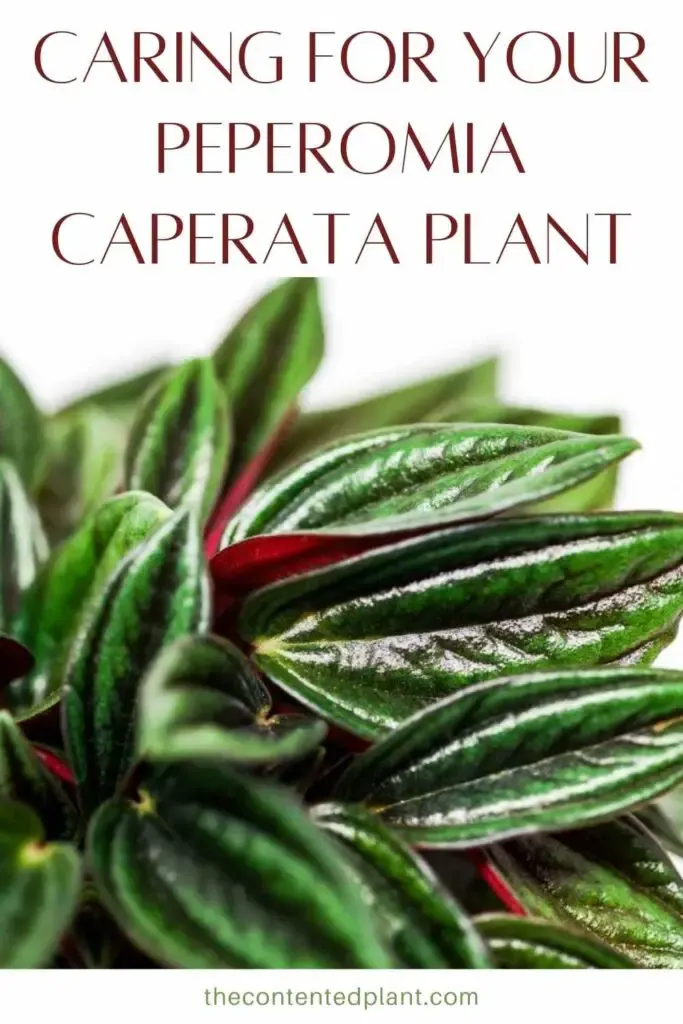Peperomia Caperata are small, easy care houseplants. These little cuties make the perfect plant for a nook or shelf. They also look great on a table for a colorful living centerpiece.
There are SO many kinds of peperomia varieties to choose from.
Some Caperata varieties sport deeply textured heart shaped leaves. The Caperata Rosso has thin strong shiny leaves with INTENSELY contrasting leaf colors. It’s quite striking.
This small houseplant works perfectly for both the office or home.
Caperata grow well in moderate to low light conditions. Even florescent light works well for them.

Caperata Plant Profile:
Peperomia Caperata is part of the plant family Piperaceae. The caperata species is one of over 3600 in this large family.
These small flowering tropical plants are native to the tropical forests of Brazil.
This epiphyte plant is very easy to get along with. It will live quite happily in your home for years. As long as you don’t over water it.
That way lays yellowing leaves and root rot.
The Caperata grows well with moderate natural and florescent lighting.
However, the variegated cultivars will need stronger light. All variegated plants require more light than solid green plants to show off their best leaf colors.
Popular Caperata Cultivars:.
Many culitvators of this plant are produced in nurseries.
Some Peperomia Caperata varieties.
- Emerald Ripple Plant
- Emerald Ripple Pepper
- Green ripple peperomia
- Ivy-leaf Peperomia
- Little fantasy peperomia
- Metallic Peperomia Ripple
- Peperomia Silver Heart
- Emerald Ripple Peperomia
Peperomia caperata is available in several colors. Grey, green and bronze red leaves are the most common. However, there are different variegated forms as well.
The peperomia caperata maculata and the variegated ripple varieties are both variegated forms.
Shop Peperomia Caperata on Etsy:
Etsy has a great selection of Caperatas. If you can’t find what you are looking for in the local shops. Try Etsy.
It probably has your favorite.
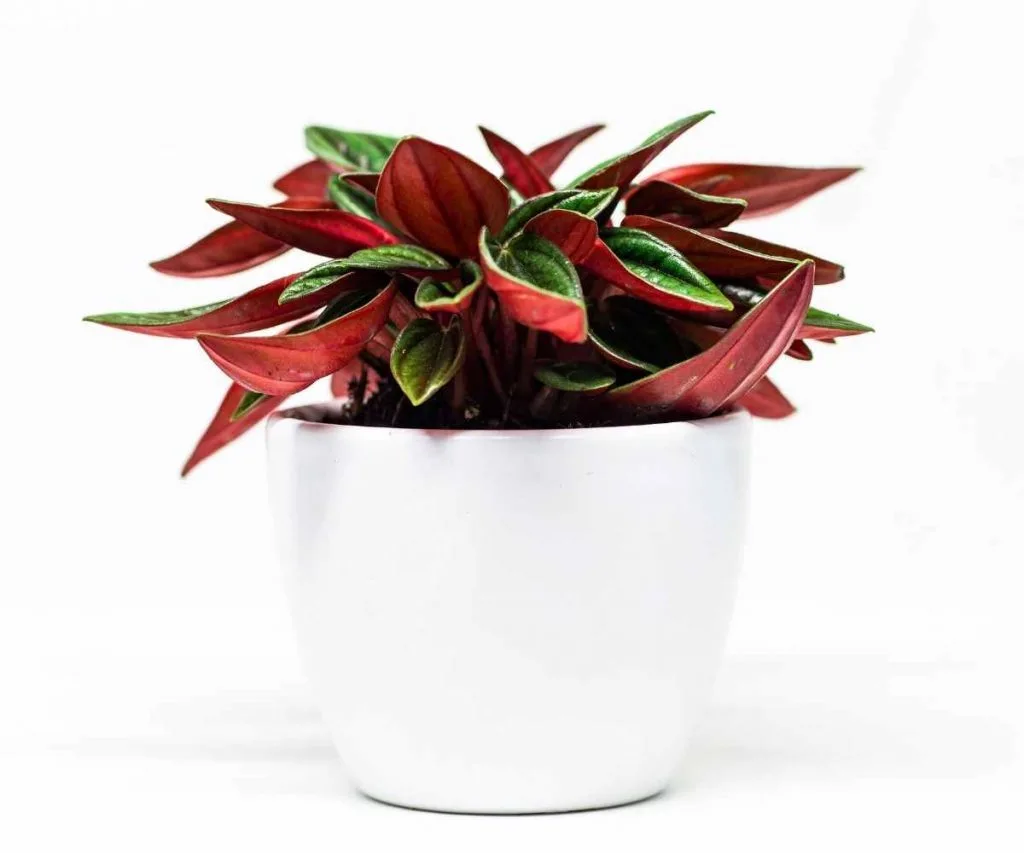
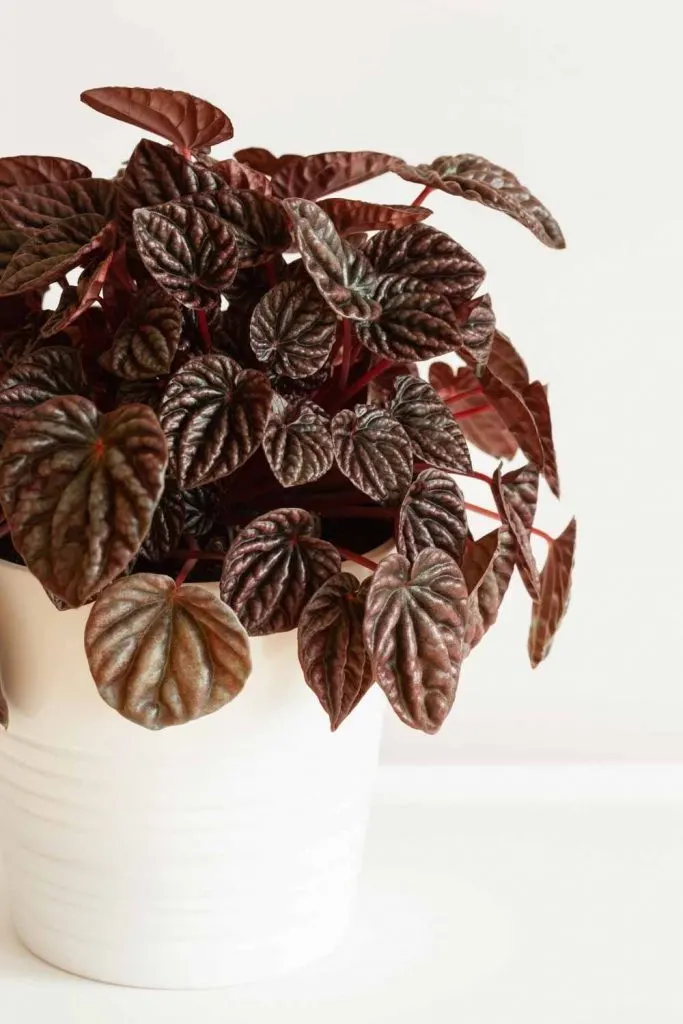
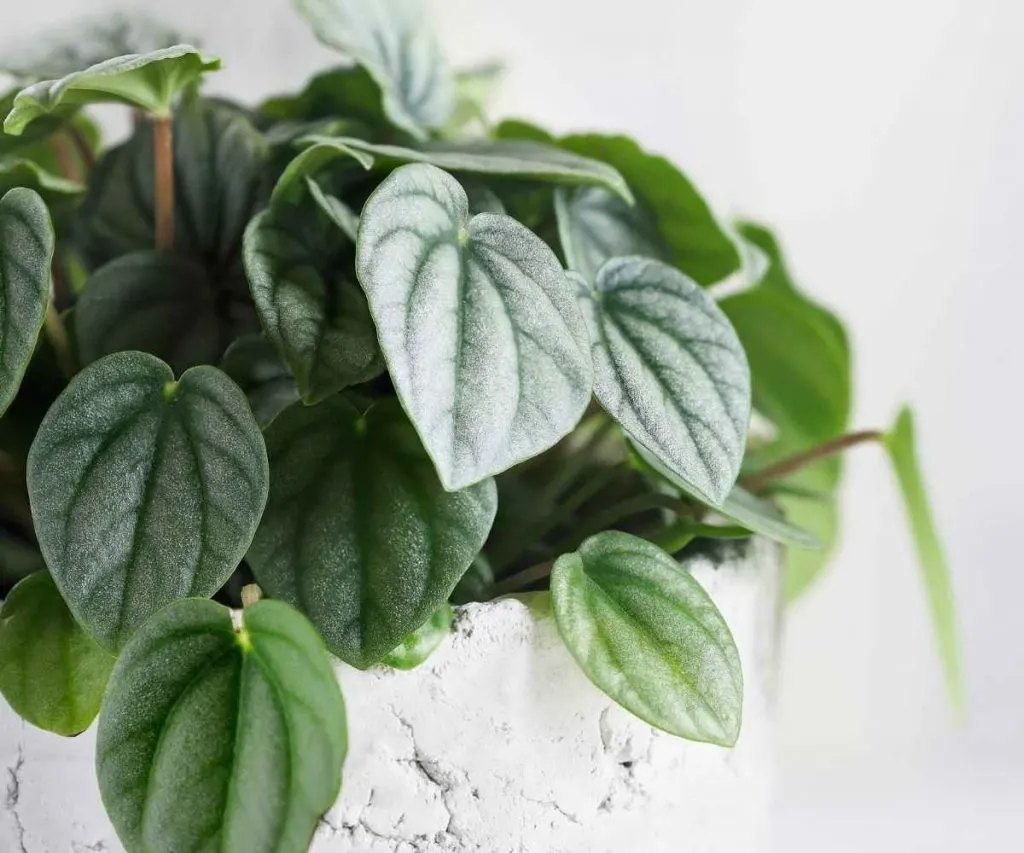
Peperomia Caperata Flowers:
All plants in the Piperaceae family are flowering plants. But the flowers are not showy. The flowers grow straight up through the leaves in narrow spikes.
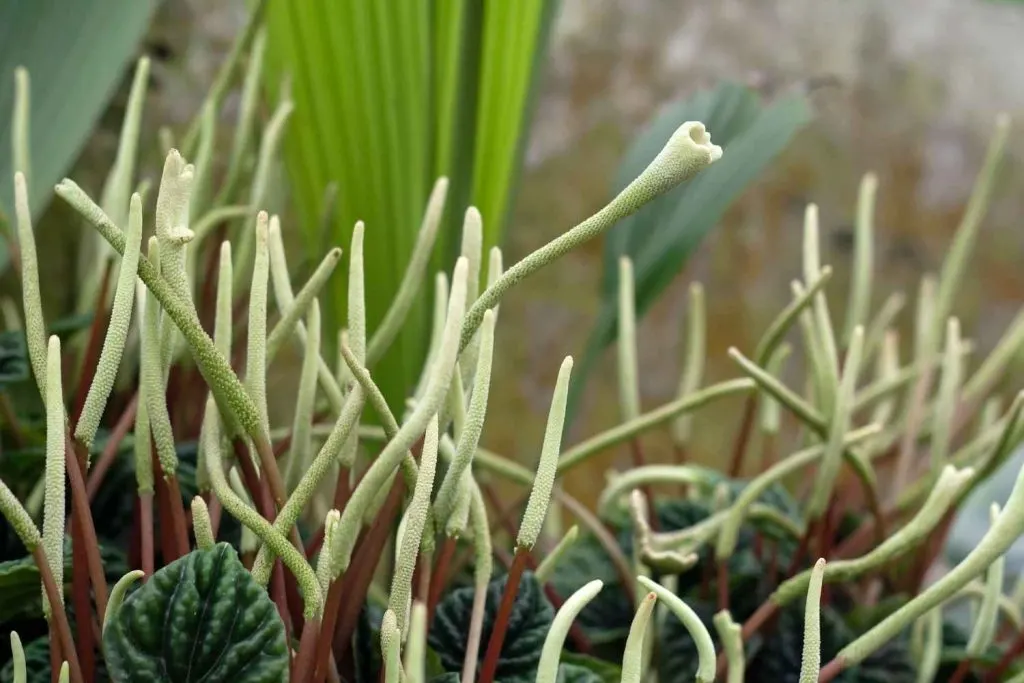
The emerald ripple flowers are the white fuzzy spears. These flower stalks erupt out out of the foliage in spring and summer with proper care.
Don’t love them? You can cut off the stalks of the flowers. This will help support the plant foliage. Or leave the flowers for extra interest as you prefer.
The simple flowers contrast nicely with the wrinkled deeply colored leaves.
It is best to dead head the flowers
Read our care guide below. It is full of important care details for your peperomia.
Peperomia Caperata Care Guide

The peperomia Caperata is a popular houseplant. This care guide will describe the best practices for basic care for this small upright flowering plant.
Instructions
Soil Preference:
- Peperomia Caperata prefer well draining potting mix. The roots will rot quickly if they sit in moist compact soil.
- I've linked our choices for a good succulent soil mix and orchid bark in the materials above for you. Use 80% succulent/20% orchid bark mix.
Pot Size and Type:
- Peperomias do best in pots that drain well and fit their roots. They don't mind being a little root bound.
- Repot every second year or when roots come out of the pot. Don't jump to a huge pot from a small one. Just go to the next size up pot.
Preferred light:
- Variegated Peperomia caperatas need moderate to bright INDIRECT light at least 6 hours a day. Keep them out of strong direct hot light.
- solid green peperomias will tolerate low light conditions but will also grow very slowly and have less vibrant colorings.
How to Water a peperomia:
- Peperomias do NOT tolerate over watering. When properly potted in a succulent soil mix they need weekly watering.
- In growing season and brighter light with warm dry temperatures you may need to water more than once a week but don't over do it.
- Best practice in watering peperomias is to let the top of the soil dry completely. Now drench the plant till the water comes out the drainage hole. Dump out the water in the drain plate. Allow to dry again. Repeat.
- In dormant winter months reduce watering to when the soil is completely dry.
- Never let this plant get wet feet. Long periods of heavy wet soil encourages root rot and Fungus Gnats.
Fertilizing Peperomias:
- Peperomias generally need little excess fertilizer.
- You can fertilize monthly in the growing season if you use quarter strength fertilizer.
- Decrease feedings by late Fall and allow your plant to rest through the winter months.
Temperature Range for peperomia:
- Peperomia plants will do best in temperatures between 65-85 degrees F.
- Keep them out of drafts from windows, heating vents or air conditioners. Huge temperature fluctuations are not good for these plants.
Pests:
- Peperomias are mostly susceptible to mealybugs.
- Spider mites, Thrips, and Whitefly are also common houseplant pests. So keep your eye out for them.
- Stress by longterm overwatering, poor light, extreme temperatures and soil conditions are contributors to pest infestations..
- Read our post on How to get rid of aphids and other pests with our homemade pesticide soap recipe or neems oil.
- To minimize the possibility of pests be sure to check all nursery plants before bringing them home.
- Watch for cottony masses that indicate mealy bugs.
- If you find mealy bugs use a cotton swab soaked in rubbing alcohol to remove it from your plant.
- Quarantine all new plants until you are sure no pests live in them.
Peperomia Propagation:
- By Division: peperomias grow naturally in clusters. When repotting you can pull the clusters apart and repot into different planters.
- Stem Cuttings: Take a stem down to the soil line and pull it off. Plant it in wet soil. In about a month it will develop small plant petals and continue growing a new plant.
Non Toxic:
- All Peperomias are non toxic to pets. Here a post on even more non toxic plants.
Notes
Here is a general video guide to Peperomia care. Enjoy your plant!
Related Content:
Follow Us:
Find us on YouTube, Instagram , Pinterest and TikTok! We love to Plant chat. We also comment, like and occasionally share your content to our daily stories. We’d love to see your plants. Share your joy in your houseplants. Happy Planting!
Recent Posts:
